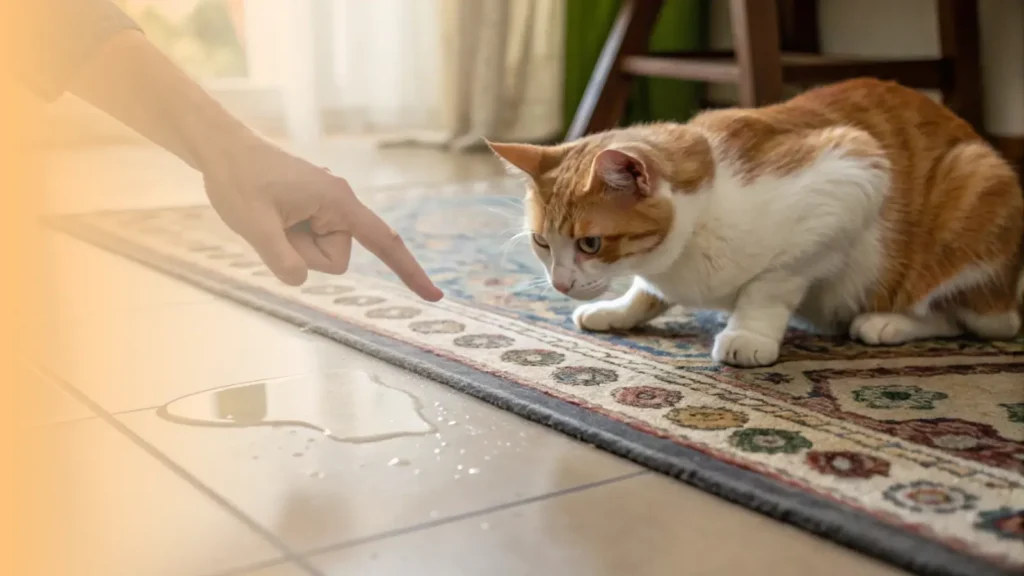It’s one of those questions you might feel a bit awkward asking, but many cat owners have certainly wondered about it after noticing their tomcat’s unique anatomy. The small spikes on a male cat’s penis are one of the more surprising features of feline biology. In my experience working with cats, understanding this trait opens up a fascinating window into their evolution, hormones, and reproductive strategy.
Why Do Male Cats Have Penile Spikes and What Do They Do
Key Takeaways
- The primary function of a male cat’s penile spikes is to stimulate the female during mating to trigger ovulation, which is the release of her eggs.
- The spikes are controlled by testosterone and are a key sign of sexual maturity. They will completely disappear within about six weeks after a cat is neutered.
- A female cat’s loud scream during mating is a normal and necessary reaction to the pain from the spikes, which ensures the hormonal process for ovulation begins.
- For veterinarians, the presence of spines on a male cat with no visible testes is a clear sign that he has a retained testicle and is not actually neutered.
What Is the Main Purpose of Penile Spikes?
The spikes on a male cat’s penis exist to stimulate the female during mating, which is necessary to trigger the release of her eggs for fertilization. I always explain to curious owners that this feature, while it seems aggressive, is a fundamental part of successful cat reproduction.
1. Triggering Ovulation in Female Cats
The backward pointing spines lie flat when the penis enters the female, but upon withdrawal, they rake the lining of her vagina. This intense physical stimulation activates nerve endings that send a signal to her brain. This signal is the key that starts a neuro hormonal cascade, a process where a nerve signal causes a hormonal response, which ultimately leads to ovulation.
2. How Induced Ovulation Works in Solitary Animals
Cats are known as “induced ovulators,” a strategy they share with rabbits and ferrets. This means the female cat, or queen, does not release eggs on a regular schedule like humans or dogs do. Instead, the physical act of mating itself is the trigger for egg release. From an evolutionary standpoint, this is a very efficient system for a species that is typically solitary, as it ensures that the energetically expensive process of producing and releasing eggs is perfectly timed with the presence of a mate, maximizing the chance of pregnancy.
What Do the Spikes Look and Feel Like?
From my experience examining them in clinical settings, the penile spines are small, sharp, backward pointing structures that are a normal part of an intact male cat’s anatomy. They are not a sign of disease but rather a highly specialized biological tool.
1. The Number and Arrangement of Spines
A sexually mature tomcat has between 100 to 150 of these keratinized spines on his penis. They are neatly organized in six to eight circular rows that point away from the tip. There is also a size difference among them, with the spines located closer to the body being the largest and the ones near the tip being progressively smaller.
2. How the Spikes Are Made of Keratin
Each individual spine is made of a connective tissue core covered by a heavily hardened, or cornified, layer of tissue. This hardened surface gets its rigidity from keratin, the same fibrous protein that makes up a cat’s claws and the rough, spiny papillae on their tongue that they use for grooming.
How Do Hormones Control the Spikes?
The development, growth, and maintenance of feline penile spines are entirely dependent on the presence of male sex hormones, specifically testosterone. They are a classic secondary sexual characteristic, a trait that appears at puberty but isn’t directly involved in reproduction like the testes are.
1. The Role of Testosterone in Spine Growth
Testosterone, which is produced in the testes, is the engine that drives the growth of these spines. The relationship is direct, as testosterone levels rise when a male cat matures, the spines develop and grow. If testosterone levels fall, such as after neutering, the spines will shrink and disappear.
2. When Spines Appear During a Cat’s Development
Male kittens are born with a completely smooth, spineless penis. As a kitten approaches puberty, his testes start producing more testosterone, and I’ve observed that the spines first begin to erupt from the surface between 9 and 13 weeks of age. They continue to mature and harden, reaching their full adult size and number when the cat is fully sexually mature around eight months old.
What Happens to the Spikes After a Cat Is Neutered?
When a male cat is neutered, the procedure removes his testes, which are the main source of testosterone, and this causes the penile spines to completely disappear. This is one of the key physical changes I discuss with owners when they are considering the procedure.
1. Why Spines Disappear After Castration
The surgical procedure of castration removes the testes, and therefore removes the body’s primary factory for producing testosterone. Without this constant hormonal signal to grow and stay rigid, the spines can no longer be maintained by the body.
2. How Long It Takes for Spines to Go Away
Following the neutering procedure, the spines begin to shrink, or atrophy, in response to the dramatic drop in testosterone. It’s a question owners often ask, and I can tell them from experience and research that the spines will have completely vanished within approximately five to six weeks, leaving the surface of the penis smooth once again.
Why Do Penile Spikes Cause a Female Cat to Scream?
The loud yowl or “mating cry” from a female cat during mating is a direct and completely normal reaction to the pain caused by the male’s spines as he withdraws his penis. It can be very alarming for owners to hear, but it is an expected part of the process.
1. The Mating Cry as a Reaction to the Spikes
The female cat’s scream is a response to the pain and neurogenic shock that occurs when the dozens of sharp, backward pointing spines scrape the sensitive walls of her vagina upon withdrawal. Following this, she will often have an “afterreaction” where she may aggressively swat at the male, roll around frantically, and lick her genital area, all of which are normal responses.
2. Why This Painful Reaction Is Necessary for Reproduction
This intense stimulation, while painful, is not just an unfortunate side effect, it is the entire point of the mechanism. The intensity of the sensation is what guarantees that a strong enough nerve signal is sent to the brain to kickstart the critical hormonal cascade required to trigger ovulation. The scream is effectively an audible confirmation that the system for reproduction has been successfully activated.
Can Spines Help a Vet Check a Cat’s Health?
Yes, in my veterinary experience, a simple and quick physical examination of a male cat’s penis can provide incredibly valuable diagnostic clues, especially when we are working with a cat whose history is unknown.
1. Identifying a Cat With an Undescended Testicle (Cryptorchidism)
One of the most common and useful clinical applications I encounter is when a male cat is brought in with no visible testes in his scrotum. A quick, non invasive check of his penis is in order. If that cat has fully developed penile spines, it is a definitive sign that functional, testosterone producing testicular tissue is still present somewhere in his body. This immediately tells me the cat is a cryptorchid, meaning he has an undescended testicle, and is not a previously castrated male. This simple check helps us make an accurate diagnosis and alerts us to the need for surgery to locate and remove the retained tissue.
Final Thoughts
The spines on a male cat’s penis are a normal, highly specialized anatomical feature and are not an aberration or defect. Their presence is entirely governed by testosterone, which is why they disappear after neutering and can even act as a useful diagnostic tool for veterinarians.







